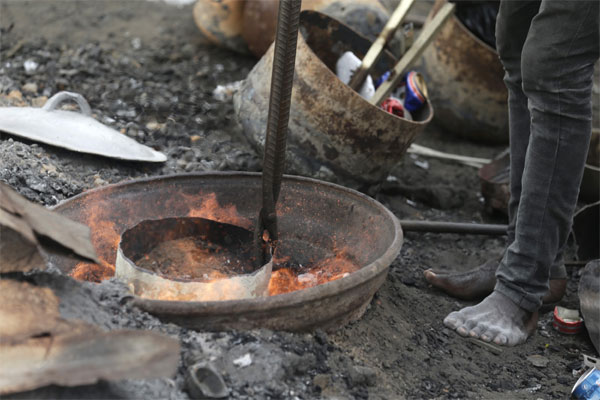Daijiworld Media Network - New Delhi
New Delhi, Oct 17: Despite being entirely preventable, lead exposure remains a grave global health threat affecting millions of people—especially children—every year, the World Health Organization (WHO) warned on Friday. Ahead of the 13th International Lead Poisoning Prevention Week (ILPPW), which runs from October 19 to 25, the agency called for urgent, coordinated action to eliminate lead from everyday environments.
Lead is still found in common consumer products like paints, batteries, cosmetics, and even spices, and contaminates the air, water, and soil in communities worldwide. Exposure to this toxic metal is linked to around 1.5 million deaths annually, primarily due to cardiovascular disease, while its neurological and behavioural impacts on children are irreversible.

“Young children absorb more lead than adults, and this causes profound, lifelong damage,” the WHO said, highlighting risks including reduced IQ, learning disabilities, and developmental delays. Lead exposure also harms unborn children, making it a generational hazard.
“There is no safe level of lead exposure,” said Dr. Ruediger Krech, Director of the Department of Environment, Climate Change, One Health and Migration (a.i) at WHO. “Every child, in every corner of the world, deserves a future free from the lifelong harm that can be prevented. We call on governments, communities, and healthcare providers to act decisively to eliminate lead exposure and protect the health and potential of the next generation.”
Although past efforts, such as the global ban on leaded petrol and restrictions on lead-based paints, have marked important progress, WHO stressed that voluntary actions are insufficient. The organisation is now urging comprehensive bans on the production, import, sale, and use of lead-containing paints and materials, and the strict enforcement of these measures, especially to protect vulnerable populations like children.
Beyond its health toll, lead exposure also carries a massive economic cost. A new global study, conducted by researchers from institutions including Jadavpur University (Kolkata) and the National University of Singapore, estimates that ongoing lead exposure in children leads to over $3.4 trillion in lost economic potential annually. The burden falls disproportionately on low- and middle-income countries, threatening to widen global inequalities.
Published in the journal Communications Earth & Environment, the study warns that without stronger global safeguards, the rising demand for electrification and poorly regulated recycling of lead-based products could reverse years of progress in children's health and development.
The WHO's call to action is clear: lead exposure is entirely avoidable, yet it continues to rob millions of children of their health, potential, and future. The time to act is now.